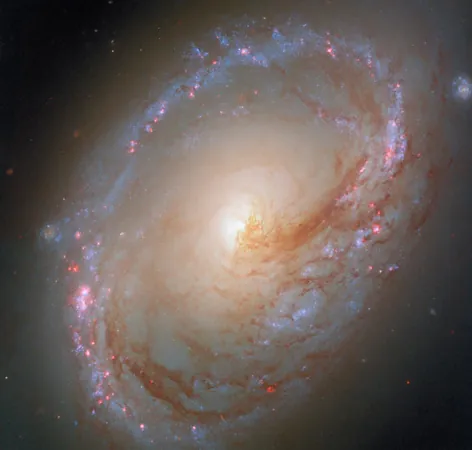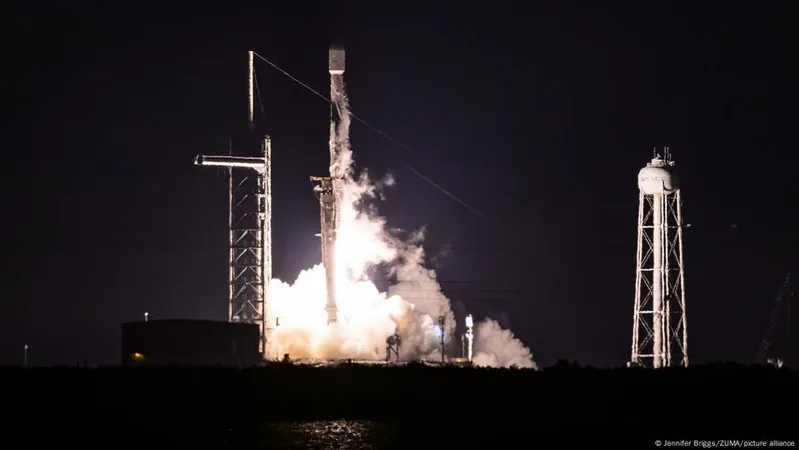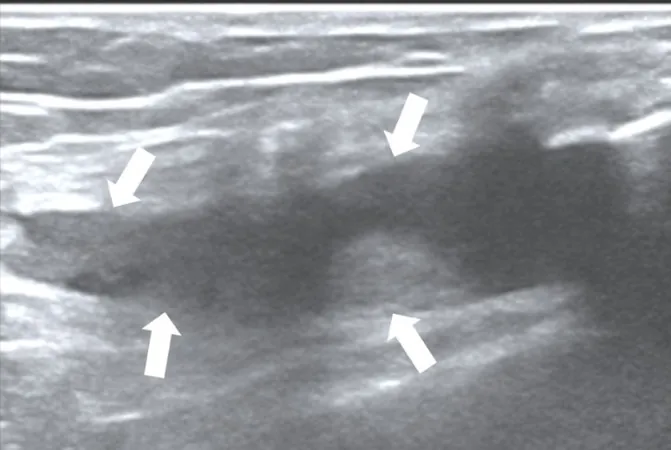
Astronomers Capture Stunning New Image of Messier 96 Using Hubble Telescope
2025-08-25
Author: Wei
A Marvel in the Sky: Messier 96 Revealed
The Hubble Space Telescope, a marvel of modern astronomy, has unveiled a breathtakingly detailed image of the spiral galaxy Messier 96, challenging our understanding of galactic structure.
Galactic Background: What is Messier 96?
Located in the constellation of Leo, approximately 34 million light-years away, Messier 96—also known as NGC 3368 and M96—first caught the eye of French astronomer Pierre Méchain in 1781. Just days later, it was logged into Charles Messier’s famous catalog.
This sprawling galaxy stretches around 100,000 light-years across, similar in size to our own Milky Way, and boasts a staggering mass estimated at 80 billion solar masses.
Part of a Cosmic Family
Messier 96 stands as a prominent member of the Leo I galaxy group, which also includes its neighbors Messier 95 and Messier 105, among others. This dynamic collection is the closest group featuring both brilliant spiral and elliptical galaxies.
A Whirl of Cosmic Color
The newly released image showcases Messier 96 resembling a giant whirlpool of luminous gas, intricately veined with dark dust that spirals inward to its core. The galaxy’s distinctive asymmetric traits stem from gravitational influences from nearby galactic companions.
According to the Hubble astronomers, "The gravitational pull from its galactic neighbors likely plays a key role in Messier 96’s uneven patches of gas and dust, compelling spiral arms, and an off-kilter core." This intriguing asymmetry comes to life in the latest Hubble images, combining ultraviolet and optical light observations.
Capturing the Essence of Star Formation
This is not Hubble's first glimpse of Messier 96; images from 2015 and 2018 contributed valuable insights, but this new release promises an even richer understanding of the galaxy’s star formation processes.
Excitingly, the newly acquired data reveals vibrant pink bubbles of ionized gas surrounding young, massive stars—a stunning spectacle illuminating star formation rings on the galaxy's periphery. These emergent stars remain nestled within the gaseous clouds that birthed them.
Astrophysicists will utilize this new data to deepen our comprehension of how stars are forged within colossal dusty gas clouds, the role of dust in filtering starlight, and the intricate ways stars impact their cosmic surroundings.
An Ongoing Journey of Discovery
Each new image captured by Hubble not only builds a more intricate portrait of Messier 96 but also propels our exploration of the universe further, shining a light on the complex processes that govern our cosmic neighborhood.




 Brasil (PT)
Brasil (PT)
 Canada (EN)
Canada (EN)
 Chile (ES)
Chile (ES)
 Česko (CS)
Česko (CS)
 대한민국 (KO)
대한민국 (KO)
 España (ES)
España (ES)
 France (FR)
France (FR)
 Hong Kong (EN)
Hong Kong (EN)
 Italia (IT)
Italia (IT)
 日本 (JA)
日本 (JA)
 Magyarország (HU)
Magyarország (HU)
 Norge (NO)
Norge (NO)
 Polska (PL)
Polska (PL)
 Schweiz (DE)
Schweiz (DE)
 Singapore (EN)
Singapore (EN)
 Sverige (SV)
Sverige (SV)
 Suomi (FI)
Suomi (FI)
 Türkiye (TR)
Türkiye (TR)
 الإمارات العربية المتحدة (AR)
الإمارات العربية المتحدة (AR)